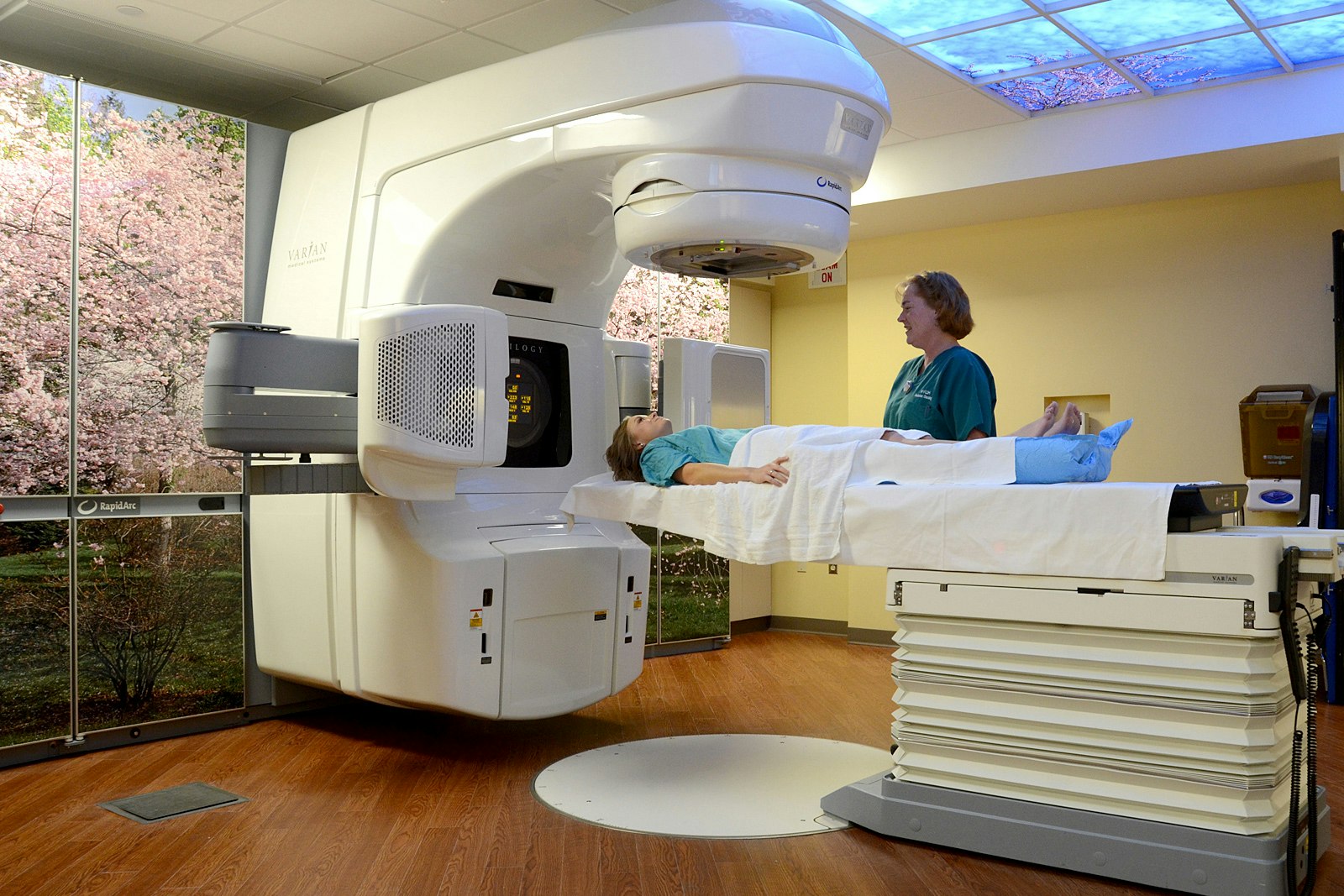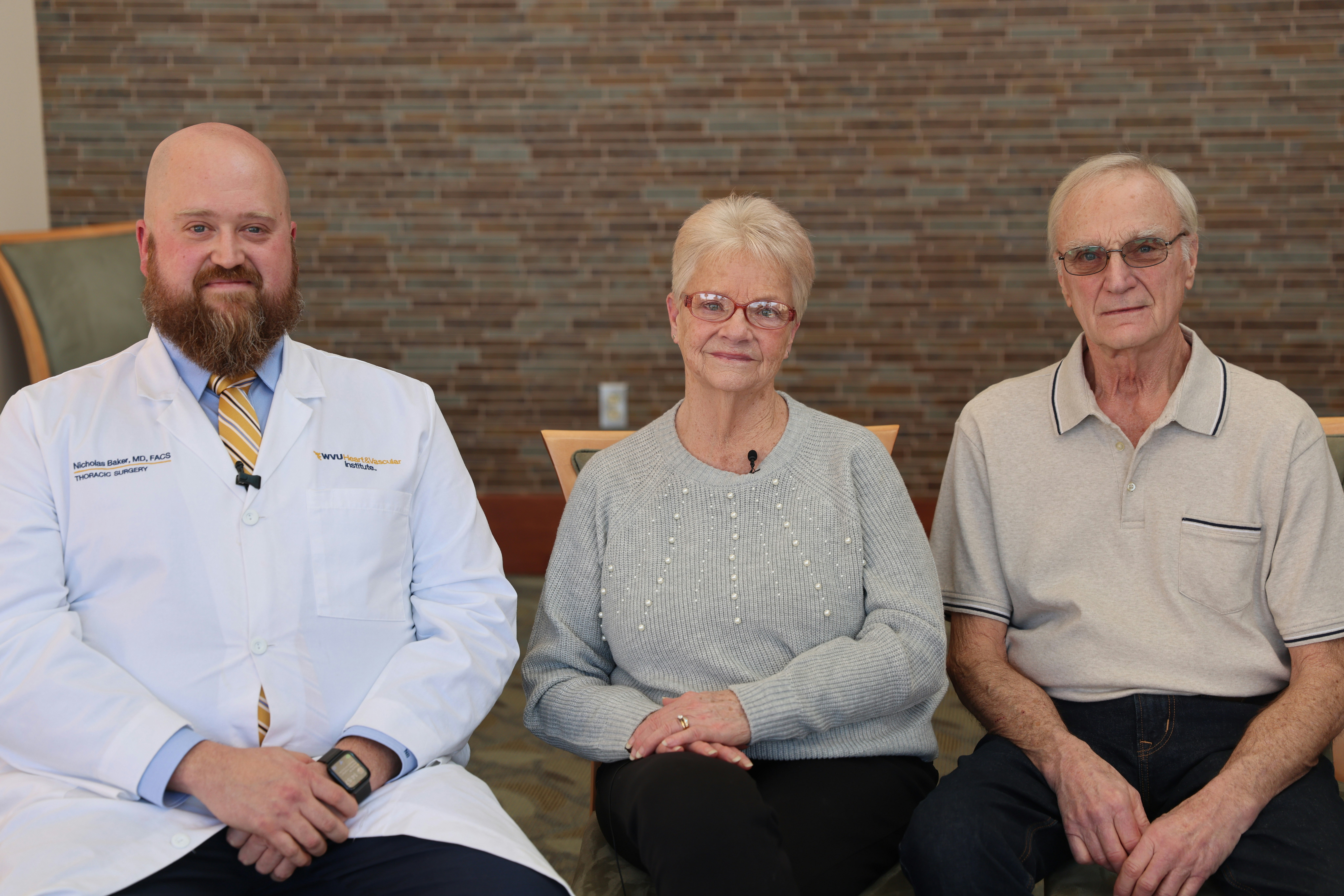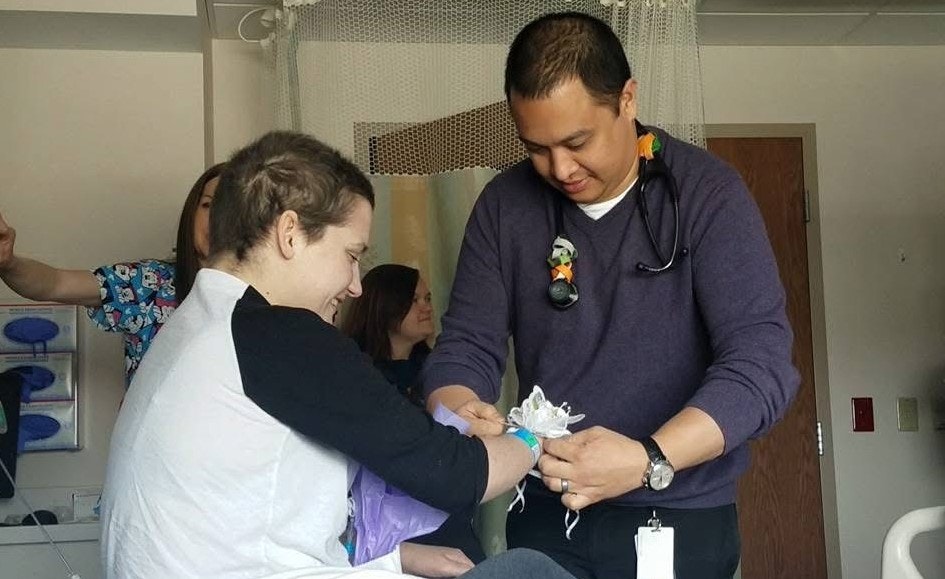As the body’s largest organ, the skin is constantly exposed to sunlight/ultraviolet light which can increase the risk of cancer. Skin cancer, the most prevalent type of all cancers, develops when abnormal skin cells begin to grow and spread uncontrollably.
Our cancer specialists bring you the latest in diagnosing and treating all forms of skin cancer, including melanoma. Services and programs are provided in state-of-the-art facilities with a team that understands that cancer is physically and emotionally challenging. A cancer diagnosis is never easy to hear, but at the WVU Cancer Institute, you will have access to some of the nation’s best cancer care. It is where you will find hope, compassionate care, and the expertise you need to overcome cancer.
Types of Skin Cancer We Treat
The WVU Cancer Institute specializes in evaluating and treating cancerous, pre-cancerous and benign skin growths and conditions. Our comprehensive team brings together board-certified dermatologists, surgeons, medical oncologists, radiation oncologists, highly trained nurses, and pathologists —all with skin cancer expertise. We work to make sure your treatment is customized to your specific type of cancer and your needs.
Our team has expertise in melanoma and all other types of skin cancer, including:
Basal cell carcinoma
This type of skin cancer originates in the skin’s outer later called the epidermis. It most commonly appears on areas of the skin exposed that most frequently are exposed to sunlight such as the face, head, neck and top of hands. This cancer is the most common type of all skin cancers, accounting for about 80% of all skin cancers and highly associated with chronic sun damage from radiation exposure. Although basal cell carcinomas tend to grow slowly, it tends to invade and destroy surrounding tissues and can eventually metastasize.
Melanoma
Melanoma is a less common form of skin cancer but is known to be one of the most aggressive cancers and will metastasize to any part of the body. IT begins in melanocytes which are cells that produce pigment in the skin. However, melanocytes exist in various parts of the body in addition to the skin such as certain parts of the eye, the later surrounding the brain called the meninges, mucosa such as the vagina, rectum , nasal cavity. Because of its rapid growth and high risk of spreading, early detection is critical and prompt diagnoses and management for melanoma.
Merkel cell carcinoma
Merkel cell carcinoma is a rare but highly aggressive skin cancer. It tends to grow rapidly and spread, just like melanoma. It is often induced by chronic sun exposure/sun damage, Merkel Cell Polyomavirus, immunosuppression, and advanced age. It most commonly seen on the head and neck and upper extremities which often has the most ultraviolet radiation exposure but can originate from anywhere.
Squamous cell carcinoma
This is the second most common subtype of skin cancer. This cancer arises from the epidermis, outer layer of the skin, and is most commonly associated with prolonged sun exposure. However, it can also be associated with immunosuppression, Human Papillomavirus (HPV), smoking, and chronic inflammation. Squamous cell carcinoma has a moderate risk of metastasis.
Screening and Diagnosing Skin Cancers
There are different ways to diagnose skin cancers such as melanoma. It is important for you to talk with your doctor if you notice any new symptoms, such as a skin sore that doesn’t heal or an area of the skin that’s scaly, bleeding, raised, or reddish-brown.
We use the latest diagnostic tests to identify skin cancer and create a personalized plan for your care. These diagnostic tools include:
- Advanced imaging — With the latest technology, including chest x-ray, computed tomography (CT), magnetic resonance imaging (MRI), and positron emission tomography (PET) scans, we are able to detect signs of disease and see whether cancer has spread to other parts of the body, such as the lymph nodes.
- Physical exam — Doctors perform a physical exam to look for signs of changes in your body. These may include skin color changes, an enlarged organ, or palpable lumps that represent enlarged lymph nodes.
- Skin biopsy — Doctors use biopsies to sample abnormal tissue from your skin and examine its cells under a microscope. Biopsy results help oncologists plan the best treatment for you. There are several different biopsy types, including shave biopsy, which shaves off an abnormal-looking growth; punch biopsy, which uses an instrument called a punch to remove a circle of tissue from an abnormal growth; and incisional or excisional biopsy, which removes part or all of the growth using a scalpel.
- Skin exam — Doctors check the skin for bumps or spots that look abnormal in color, size, texture, or shape.
Treatment for Skin Cancers
From your first visit, our team works with you to address your specific condition and needs. Our goal is to treat cancer at its earliest stage. Your care plan may include:
- Topical chemotherapy — This treatment involves applying anti-cancer medication (such as 5-fluorouracil or imiquimod) directly to the skin. It is used to treat superficial basal or squamous cell carcinomas by targeting cancer cells in the top layer of the skin.
- Simple excision — This type of treatment includes cutting the tumor off, along with some of the surrounding tissue.
- Immunotherapy (Immune Checkpoint Inhibitors) — For advanced skin cancers like melanoma, immunotherapy helps boost your body’s natural defenses to fight cancer. Treatments such as immune checkpoint inhibitors (e.g., pembrolizumab, nivolumab) are commonly used. Immunotherapy plays a key role in treating advanced skin cancers of various subtypes. Single or combination immunotherapy can be used. Tumor-infiltrating lymphocytes (TIL) is a relatively new cellular therapy that is coming to WVU soon for management of advanced malignant melanoma. It is an advanced form of immunotherapy where immune cells are collected, expanded in a lab, and then re-infused into the patient to fight the cancer. This is the first personalized therapy approved in malignant melanoma that uses the patient’s own immune cells to fight the cancer. It is part of the broader field of adoptive cell therapy.
- Medical oncology — Medical oncology includes systemic treatments such as chemotherapy, immunotherapy, targeted therapy, and hormone therapy. These medications are used to destroy cancer cells, slow their growth, or shrink tumors before surgery. They may also be used after surgery to reduce the risk of recurrence.
- Mohs micrographic surgery— One of the most advanced and effective treatments for skin cancer is Mohs surgery. According to the Skin Cancer Foundation, this procedure has the lowest recurrence rates, highest cure rates, and best cosmetic results of any treatment for the most common types of skin cancer.
- Photodynamic therapy — This treatment applies a light-sensitive medication that is absorbed into the cancer. Light is then shined onto the skin, activating the medicine and killing the cancer cells.
- Radiation oncology — We use radiotherapy treatments to target, destroy, and shrink cancer. The treatments produce precise, high-energy rays that target the exact area of cancer and spare healthy cells. Radiation oncology includes 3D conformal radiotherapy, image-guided radiation therapy, stereotactic radiation therapy, intensity-modulated radiation therapy, intraoperative radiation therapy (IORT), and brachytherapy.
- Surgery — Surgery helps us diagnose, stage, and treat many tumors. Surgical approaches such as laser surgery use the high-intensity light of a laser to precisely remove a cancerous or precancerous lesion.
- Targeted therapy — Targeted therapy focuses on specific genetic mutations within cancer cells. In about 50% of cutaneous melanomas, there is a mutation in the BRAF gene, which leads to the production of an abnormal BRAF protein that promotes cancer growth. Drugs like vemurafenib and dabrafenib are designed to inhibit this faulty protein. These are often combined with MEK inhibitors—such as trametinib—which target MEK, a downstream protein in the same pathway. Using both BRAF and MEK inhibitors together helps to more effectively slow tumor growth and reduce resistance to treatment.
Resources for Skin Cancers
Cancer care goes beyond the medical diagnosis and treatment. Below you can find some resources that may help answer questions and connect you to others.





